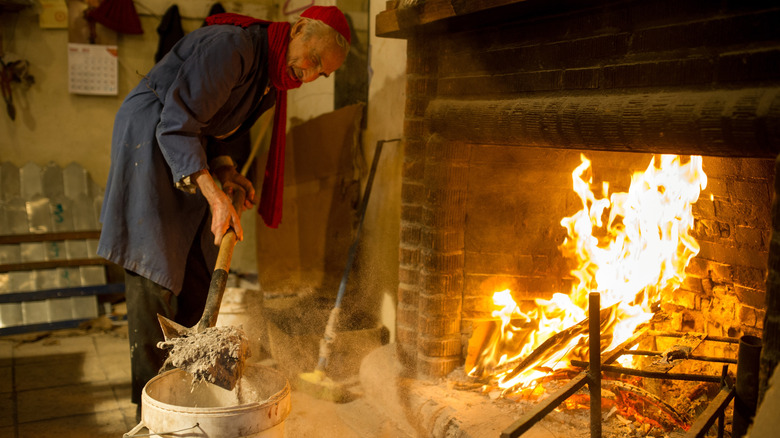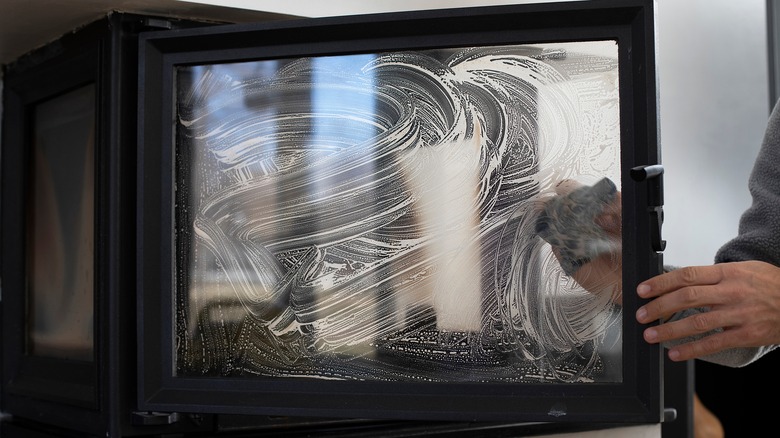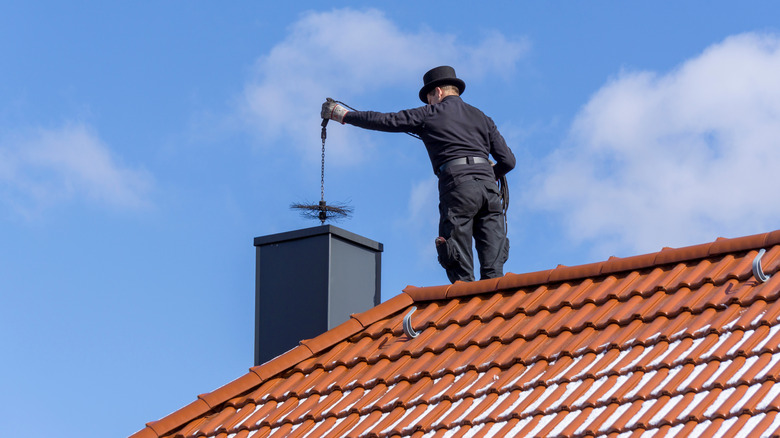The Dangerous Mistakes To Avoid When Cleaning Your Fireplace
When you want a style of fireplace that becomes the focal point in any room, there are many steps you can take. Decorating your fireplace like a professional can be one way to give the space an impressive look, as can making use of high-end materials. However, don't forget the importance of simply keeping it clean and tidy. If you are putting off cleaning the fireplace because you are unsure how to do it safely, you're smart to be wary. There are a number of mistakes that people make during this process that could be dangerous. Things like using harsh chemicals, using the wrong tools, and cleaning the glass with the wrong cleaner can cause significant issues for you in both the short and long term.
The most important mistake to avoid to keep yourself safe when cleaning a fireplace is not waiting until the unit is completely cooled down, which can take as long as 36 hours after extinguishing the fire. In some cases, the coals and ashes here can potentially restart a fire a few days later.
Beyond that step, though, don't forget to wear the correct protective gear. At a minimum, you should wear leather gloves (about $13 on Amazon) and a P2 dust mask (about $24 on Amazon). Safety goggles for eye protection (about $13 on Amazon) are important, too, as small particles and pollutants from the materials that were burned can float through the air, potentially leading to a toxic exposure.
Dangerous mistakes to avoid when cleaning a gas fireplace
Perhaps the biggest concern when cleaning a gas fireplace is the possibility of a gas leak while you're working. Don't forget to turn off the pilot light, if your unit has one, and/or to turn off the gas before you begin working. The controls for the gas fireplace should have knobs that allow you to control these two items.
Never use an unsafe glass cleaner on the doors, as some glass cleaning products aimed at general residential use may be flammable. Seek out a product that specifically works for fireplaces (available on Amazon for about $12), as the specialty product won't be flammable. If the doors are removable, as many of them are, it's safer to take them off and clean them over a blanket or towel to reduce the risk of breaking the glass and cutting yourself.
Finally, don't make the mistake of failing to remove the soot from the materials inside, especially on the faux logs that may be on the interior. Excess soot can be a sign of a malfunctioning gas fireplace. If the unit has soot-clogged gas burner ports, this could lead to a dangerous buildup of the soot, which means you probably would need to call a pro to unclog them to avoid dangerous issues when using the fireplace. For example, clogged burners may not operate properly, causing the unit to shut off the gas or pilot light as a safety measure.
Common errors people make when cleaning a wood burning fireplace
Some people fail to do a chimney inspection before they begin cleaning a wood-burning fireplace, and this can be a dangerous issue. If you have animal nests inside, for example, you could receive a nasty surprise when you start cleaning. If you don't feel comfortable climbing on the roof or doing the inspection yourself, hiring a chimney sweep is a smart idea. The average inspection from a professional costs around $450. You don't have to hire a pro every time you clean the wood fireplace, as once a year is often enough for a thorough inspection.
After the inspection, a common mistake people make with the cleaning process of a wood-burning fireplace is using an improperly sized chimney brush. If the head on the chimney brush is too small or too large for the interior of the chimney, it could fail to remove the materials or it could become stuck. Your brush should be between 0.5 and 1 inch larger than the flue.
People commonly want to use harsh chemicals on the fireplace to help remove the soot and dark marks, but this is a common error. Such chemicals may emit toxic fumes, exposing you within the tight quarters of the fireplace. Some chemical cleaners are flammable, so you should definitely avoid them. They also may damage the surfaces of the unit, including the bricks, which could make it unsafe to light a fire the next time.


